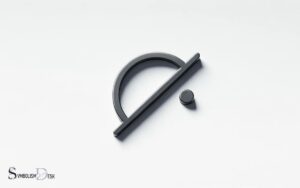Is the Symbol Mg Mean Milligrams Or Micrograms? Milligrams
The symbol mg stands for milligrams, not micrograms.
Milligrams and micrograms are both units of measurement used to quantify small amounts of mass.
They are part of the International System of Units (SI) and are commonly used in medicine, chemistry, and other scientific fields.
The abbreviation “mg” represents milligrams, while “µg” or “mcg” represents micrograms. It is crucial to differentiate between the two units because their values differ significantly.
It is essential to understand the difference between milligrams and micrograms because confusing the two can result in potentially harmful errors, especially in medical prescriptions and scientific experiments.
Always ensure that the correct unit is being used and properly communicated to avoid such mistakes.
The Properties of Mg (&) Mcg
| Unit Symbol | Unit Name | Equivalent |
|---|---|---|
| mg | Milligrams | 0.001 grams |
| µg or mcg | Micrograms | 0.000001 grams |
Key Takeaway

Five Facts About Symbol Mg Mean Milligrams Or Micrograms
Understanding The Basics Of Milligrams And Micrograms
Milligrams and micrograms are terms commonly associated with medication, supplements and nutrition.
People are often confused about the difference between milligrams (mg) and micrograms (mcg), and this can lead to serious health problems if the wrong doses are taken.
In this blog post, we will define both milligrams and micrograms and provide conversions and equivalents to help you understand the basics of these two measurements.
Defining Milligrams And Micrograms
Milligrams (Mg)
A milligram is a unit of measurement for mass and is abbreviated as ‘mg’. It is the standard measure for most dietary supplements, prescriptions, and over-the-counter medication. Simply put, one milligram is equal to 1/1,000 of a gram, or 0.001 grams.
Here are a few examples of how milligrams are commonly used:
- Prescription and over-the-counter medication doses are measured in milligrams (mg).
- The recommended daily intake of vitamins and minerals are usually listed in milligrams (mg).
- Nutritional information mentions a percentage of the total milligrams of a nutrient.
When purchasing any supplements or medication, it is crucial to check with a doctor or pharmacist before using it to determine how much to take.
Micrograms (Mcg)
Micrograms (mcg) are even smaller than milligrams, and are used to measure trace or very small amounts of molecules or elements in a substance. One microgram is equal to one-millionth of a gram, or 0. 000001 grams.
Here are some examples of how micrograms are commonly used:
- Vitamin b12 injections and some other injectables are measured in micrograms (mcg).
- Certain vitamins, such as vitamin d, are listed in micrograms (mcg).
- Nutritional information for some minerals, such as selenium, may be listed as both milligrams and micrograms.
Conversions And Equivalents
Converting milligrams to micrograms, or vice versa, is essential to prevent overdose or underdose. It is always a good idea to check with a doctor or pharmacist to determine the correct dosage.
To convert milligrams to micrograms, multiply the value in milligrams by 1000. For example, 10mg = 10,000mcg.
To convert micrograms to milligrams, divide the value in micrograms by 1000. For example, 5000mcg = 5mg.
It’s essential to know that some products may also use abbreviations for measuring units. For example, the abbreviation ‘iu’ (international units) is often used for some vitamins and is a completely different measurement unit.
Understanding the difference between milligrams and micrograms can be crucial to maintaining good health. Always consult with a qualified medical professional if in doubt regarding dosage or medication choices.
The Distinctive Features That Separate Milligrams And Micrograms
Magnesium is a mineral that our body needs for various functions such as helping our heartbeat steadily, stabilizing blood pressure, and maintaining nerve and muscle health.
However, measuring magnesium can be confusing, especially if you encounter the abbreviations milligrams (mg) and micrograms (mcg).
In this section, we will discuss the different features that separate milligrams and micrograms.
Differences In Magnitude And Scale
Milligrams and micrograms are both units of measurement for mass or weight, but they differ in magnitude and scale.
To differentiate between milligrams and micrograms, here are some key points to consider:
Overall, the significant difference between milligrams and micrograms is the scale of quantity it measures.
Remembering that one milligram is equivalent to one thousand micrograms can help prevent dosage errors and ensure the correct amount of medication or supplement consumption.
Practical Applications And Use Cases
Understanding the difference between milligrams and micrograms has numerous practical applications, such as:
Understanding the difference between milligrams and micrograms can help prevent dosing errors, promote good nutrition habits, and apply more accurate scientific methods.
Knowing when to use either milligrams or micrograms can help promote better health outcomes. Always remember, one milligram is equivalent to one thousand micrograms, but use each unit of measurement appropriately.
The Importance Of Proper Mg Usage And Interpretation
As a scientist, researcher, or anyone handling medication, supplements and chemical compounds, it’s vital to understand the correct usage and interpretation of the symbol ‘mg. ‘
This knowledge will help prevent misunderstandings, measurement errors, and minimize health and safety risks.
Preventing Misunderstandings And Measurement Errors
The symbol ‘mg’ has two interpretations; it can mean milligrams or micrograms. Mistaking one for the other can lead to significant measurement errors and potentially fatal health risks.
Here are some essential things you need to keep in mind while using ‘mg’:
- Make sure that you understand the intended use of the chemical compound you are handling and the corresponding units of measurement.
- Ensure your scales are correctly calibrated before weighing out the chemical compound.
- Verify the symbol ‘mg’ before noting down the measurement unit of the chemical compound.
- If unsure, ask a colleague or supervisor for clarification before proceeding with any experiments.
Minimizing Health And Safety Risks
Using the wrong dosage of medication, supplements, and chemical compounds can pose serious health and safety risks.
Here are some tips on how you can minimize these risks:
- Check the prescribed dosage of medication and supplements to ensure that you are administering the correct amount.
- Be aware of any allergies, contraindications, and side effects that may arise by taking a specific dose of medication or supplement.
- Avoid self-medication or self-prescription at all times.
- Any concerns or questions should be directed to your physician or pharmacist before taking any medication or supplements.
Proper use and interpretation of the symbol ‘mg’ is crucial in preventing measurement errors and minimizing health and safety risks. Always double-check and verify the unit of measurement, especially when handling medication, supplements, and chemical compounds.
Health Supplements And Dosage Recommendations
Is The Symbol Mg Mean Milligrams Or Micrograms?
When it comes to health supplements, it’s crucial to understand the correct dosages. The labels on these products can be confusing, especially when it comes to interpreting the symbol mg.
Here’s what you need to know about the difference between milligrams (mg) and micrograms (mcg), and how to calculate safe and effective supplement dosages.
Interpreting Supplement Facts And Labels
Before taking any health supplement, it’s essential to understand the information on the label. This can help you make informed choices about which products to take, and can also help you avoid taking too much of a particular nutrient.
Here are some key things to look for on a supplement label:
- Serving size: This tells you how much of the product is considered one serving.
- Amount per serving: This tells you how much of each nutrient is in one serving of the product.
- Daily value (dv): This tells you what percentage of the recommended daily intake of each nutrient is provided by one serving of the product.
- Other ingredients: This lists any additional ingredients in the product, such as fillers or binders.
Calculating Safe And Effective Dosages
Once you understand the information on a supplement label, you can use it to calculate safe and effective dosages.
Here are some general rules of thumb to keep in mind:
- Start with the lowest effective dose: Begin with the smallest possible dose that’s still effective for your needs, and gradually increase it as needed.
- Stick to recommended dosages: Follow the recommended dosages on the label, and don’t exceed the stated daily limit.
- Consider your individual needs: Certain factors, such as age, sex, weight, and health conditions, can affect your ideal dosage of a particular nutrient. Consult with a healthcare provider to determine the appropriate dosage for you.
- Be aware of potential interactions: Some nutrients can interact with medications or other supplements, so it’s important to check for potential interactions before adding a new supplement to your regimen.
Remember, taking too much of a supplement can be harmful to your health, so it’s important to calculate safe and effective dosages based on your individual needs.
By understanding supplement labels and dosages, you can make informed choices about which health supplements to take and how much to take.
Prescription Medications And Mg Usage Instructions
Are you among the many individuals that get confused between milligrams and micrograms? If you answered yes, you are not alone.
Mg can represent both milligrams and micrograms. Furthermore, misinterpretation can lead to serious health consequences, especially when it comes to prescription medications.
Identifying Proper Mg Dosage And Administration
Identifying the proper mg dosage and administration is critical to ensure the safe and effective use of prescription medications.
Here are some key points to keep in mind:
- Read the prescription label carefully to determine whether the prescribed dosage is in milligrams or micrograms.
- Consult with your healthcare provider or pharmacist if there are any uncertainties regarding the proper dosage.
- Follow the medication administration guidelines and ensure you use the appropriate medication delivery device, such as a syringe or a dropper.
- Measure the medication accurately, following the instructions carefully, to ensure the prescribed dosage is correct.
- Do not adjust your medication dosage without consulting your healthcare provider.
Avoiding Confusion And Error In Medical Settings
Misinterpretation of mg dosage instructions can lead to confusion and error in medical settings, which can result in severe patient harm.
Here are some tips to avoid confusion in medical settings:
- Healthcare providers should use the standardized medical abbreviation system to eliminate misinterpretation.
- Ensure clear communication between the patient, the healthcare provider, and the pharmacist regarding the prescribed medication’s proper dose and administration.
- Implement medication safety protocols such as double-checking dosage calculations and having a second healthcare provider examine the ordered medication.
- Develop and maintain a culture of safety, where healthcare providers can report their mistakes without the concern of retaliation.
Maintaining a clear understanding of proper mg dosage and administration is crucial for avoiding misinterpretation, confusion, and errors, especially in medical settings.
When in doubt, always consult with your healthcare provider or pharmacist to ensure the proper use of your prescriptions.
Industries And Processes That Rely On Accurate Mg Measurement
Magnesium is an essential element, and mg is its chemical symbol. However, industries and processes that rely on accurate mg measurement often encounter confusion about whether mg means milligrams or micrograms.
We’ll explore the industries and processes where accurate mg measurement is crucial, and we’ll clear up the confusion about mg measurement.
Manufacturing And Quality Control
Accurate mg measurement is crucial in both manufacturing and quality control processes. Here are some key points for each:
Manufacturing
- Magnesium is a popular material in the manufacturing industry, and accurate measurement is essential in producing high-quality products.
- In manufacturing processes, mg may be used in different forms, such as powders or ingots, which require different measurement techniques.
- The accurate measurement of mg in manufacturing ensures that products are safe, durable, and meet consumers’ expectations.
Quality control
- In quality control processes, mg measurement is crucial in ensuring that products are of the desired quality and meet regulatory standards.
- Quality control may involve measuring mg in raw materials, such as alloys or coatings, or finished products, such as electrical components or medical devices.
- Accurate mg measurement in quality control prevents defects, complaints, and recalls, ensuring that products are safe for use.
Environmental Testing And Analysis
Accurate mg measurement is also essential in environmental testing and analysis.
Here are some key points:
Environmental testing
- Mg may be present in different environmental samples, such as air, water, soil, or biota.
- Accurate measurement of mg in environmental samples is necessary to understand its concentration, distribution, and fate.
- Environmental testing may involve different measurement techniques, such as spectroscopy or chromatography, depending on the sample matrix and the required sensitivity.
Analysis
- Mg may also be used in various analytical techniques, such as atomic absorption spectroscopy or mass spectrometry.
- Accurate mg measurement in analytical processes ensures reliable and reproducible results, which are essential in research, development, or regulatory compliance.
- Analysis may involve measuring mg in different sample matrices, such as biological fluids, food, or pharmaceuticals, which require different sample preparation and measurement techniques.
Accurate mg measurement is crucial for various industries and processes, including manufacturing, quality control, environmental testing, and analysis.
It ensures product safety, quality, and regulatory compliance, as well as scientific research and innovation.
By understanding the context and the measurement techniques, we can avoid confusion about mg measurement and ensure accurate and reliable results.
Using The Right Units And Tools For Your Needs
Choosing The Appropriate Measuring Devices And Conversions
When it comes to measuring substances, using the right measuring device and units is crucial to ensure accurate results.
Here are some key points to consider when choosing the appropriate measuring devices and conversions:
- Determine the type of substance and quantity being measured. Is it a liquid or solid? Is the quantity in large or small amounts?
- Choose the appropriate measuring device based on the type and quantity of the substance being measured. Teaspoons, tablespoons, cups or measuring scales are ideal for liquids and solids, while measuring spoons are suitable for smaller amounts.
- If using a kitchen scale to measure smaller substances, use a digital scale for greater accuracy. Analog scales may be off by a few milligrams or micrograms.
- Always ensure that the measuring units are consistent. Mixing milligrams and micrograms can lead to incorrect measurements and potentially harmful situations.
- Use measuring conversions charts and calculators if you need to convert between units, such as milligrams to micrograms or ounces to grams. This can help prevent mistakes and ensure accurate measurements.
Consulting Official References And Guidelines
In addition to choosing the appropriate measuring devices and conversions, it’s essential to consult official references and guidelines to ensure safe and accurate measurements.
Some key points to keep in mind include:
- Always check the instructions and packaging for the substance being measured to determine the appropriate measuring units and techniques.
- Consult official resources, such as the national institute of standards and technology (nist), the united states pharmacopeia (usp), or the international system of units (si), for guidance on measuring units and conversions.
- Be aware of any regulatory guidelines or restrictions regarding the substances being measured, such as controlled medications.
By following these guidelines and choosing the appropriate measuring devices and conversions, you can ensure accurate and safe measurements, regardless of whether you’re measuring milligrams or micrograms.
Remember to always consult official resources and guidelines as needed, and never hesitate to double-check your measurements and techniques for accuracy.
Communicating Effectively And Accurately About Mg Usage
Is The Symbol Mg Mean Milligrams Or Micrograms
There is a common misconception among patients and even healthcare providers about whether the symbol mg means milligrams (mg) or micrograms (mcg).
It is crucial to communicate effectively and accurately when discussing mg usage to avoid medication errors.
In this blog post, we explore the importance of clear communication between health providers and patients, engaging with industry standards and best practices concerning mg usage.
Clear Communication Between Health Providers And Patients
Miscommunication can lead to medication errors and, in some cases, severe medical consequences.
Therefore, it is vital to ensure that healthcare providers and patients use the correct units of measurement when discussing mg usage.
The following are tips to improve communication:
- Use standard units of measurements: Health providers and patients must use standard units of measurement consistently. For instance, milligrams (mg) and micrograms (mcg) are standard units of measurement for medications.
- Clarify the abbreviation: It’s essential to clarify the abbreviation used for mg to avoid confusion. If you use mg for milligrams, make sure to indicate that in the label or prescription.
- Provide clear instructions: Ensure that patients understand how much medication to take and how often to take it. You can show them examples or use a pill dispenser to help them remember when to take medications.
Engaging With Industry Standards And Best Practices
Medical professionals and pharmaceutical companies must adhere to industry standards and best practices in communicating mg usage to avoid confusion and potential errors.
Some of the best practices include:
- Follow medication guidelines: Medical professionals must follow medication guidelines provided by regulatory bodies. For instance, the fda requires pharmaceutical companies to use standard units of measurements.
- Use clear labeling: All medication labels should show the correct unit of measurement and dosage to avoid confusion during administration.
- Implement safe prescribing practices: Health providers should consider patients’ weight, age, and medical history before prescribing medications.
Clear communication and adherence to best practices are vital in using mg effectively and avoiding medication errors.
By following these tips, healthcare providers and patients can minimize the risks associated with medication misuse and ensure safe and effective medication use.
Does the House Symbol on My Phone Mean I Am Connected to Wi-Fi?
The presence of the house symbol indicates wi-fi connection on your phone. This means you are linked to a wireless network, enabling you to access the internet without using your mobile data. It’s a handy visual cue that ensures you can browse, stream, and download seamlessly while utilizing a reliable Wi-Fi signal.
FAQ For Is The Symbol Mg Mean Milligrams Or Micrograms
What Does Mg Mean In Medical Terms?
In medical terms, mg refers to the chemical symbol for magnesium.
Is Mg A Measurement Of Weight?
No, mg is not a measurement of weight. It is a chemical symbol.
Mg is the chemical symbol for the element magnesium.
Mg is commonly used to refer to milligrams while µg refers to micrograms. The main difference is their scale.
Can Mg Be Used To Measure Liquids?
No, mg cannot be used to measure liquids. It is a chemical symbol used to refer to the element magnesium.
Conclusion
Now that we have learned about the differences between milligrams and micrograms and how they are used in different contexts, it is clear that the symbol “mg” refers to milligrams. When it comes to medication dosages, mg is often used to indicate the amount of active ingredient in a medication. On the other hand, the symbol “mcg” is used for micrograms, which are one-thousandth of a milligram. This death symbolism explained the importance of understanding the correct dosage in medical settings.
When it comes to measuring small amounts, a slight mix-up can have serious consequences, and it is important to be aware of the appropriate units and the correct abbreviations for them.
This is especially crucial in the field of medicine, where health professionals must accurately measure and administer medications to patients.
By familiarizing ourselves with the proper usage of milligrams and micrograms, we can avoid confusion and errors that could potentially lead to harm.
It is always advisable to consult with a healthcare provider or a qualified expert if in doubt about dosage or measurement units.
We have learned that the symbol “mg” stands for milligrams, and it is important to use the correct units and abbreviations to ensure the safety and wellbeing of individuals.






